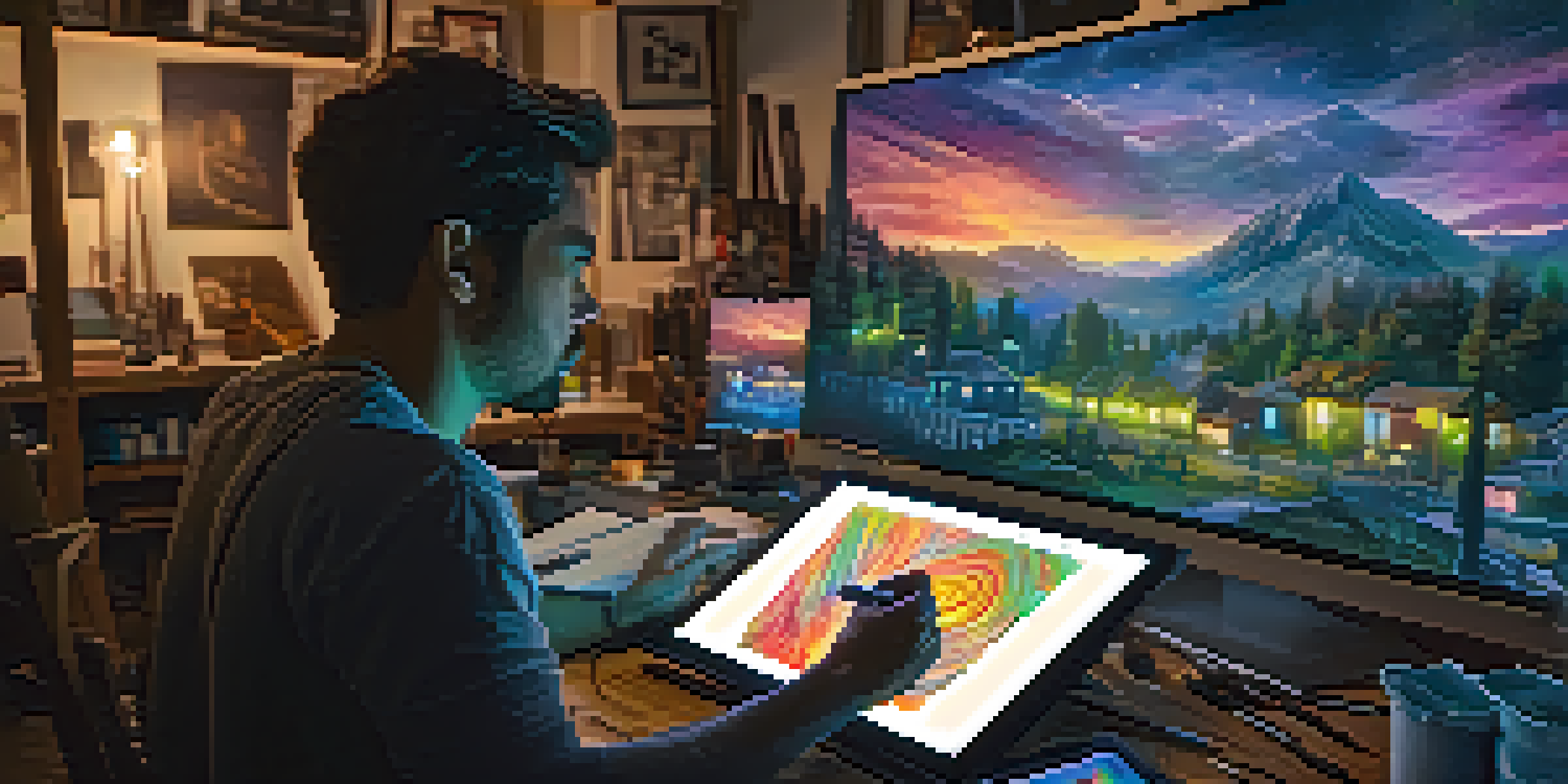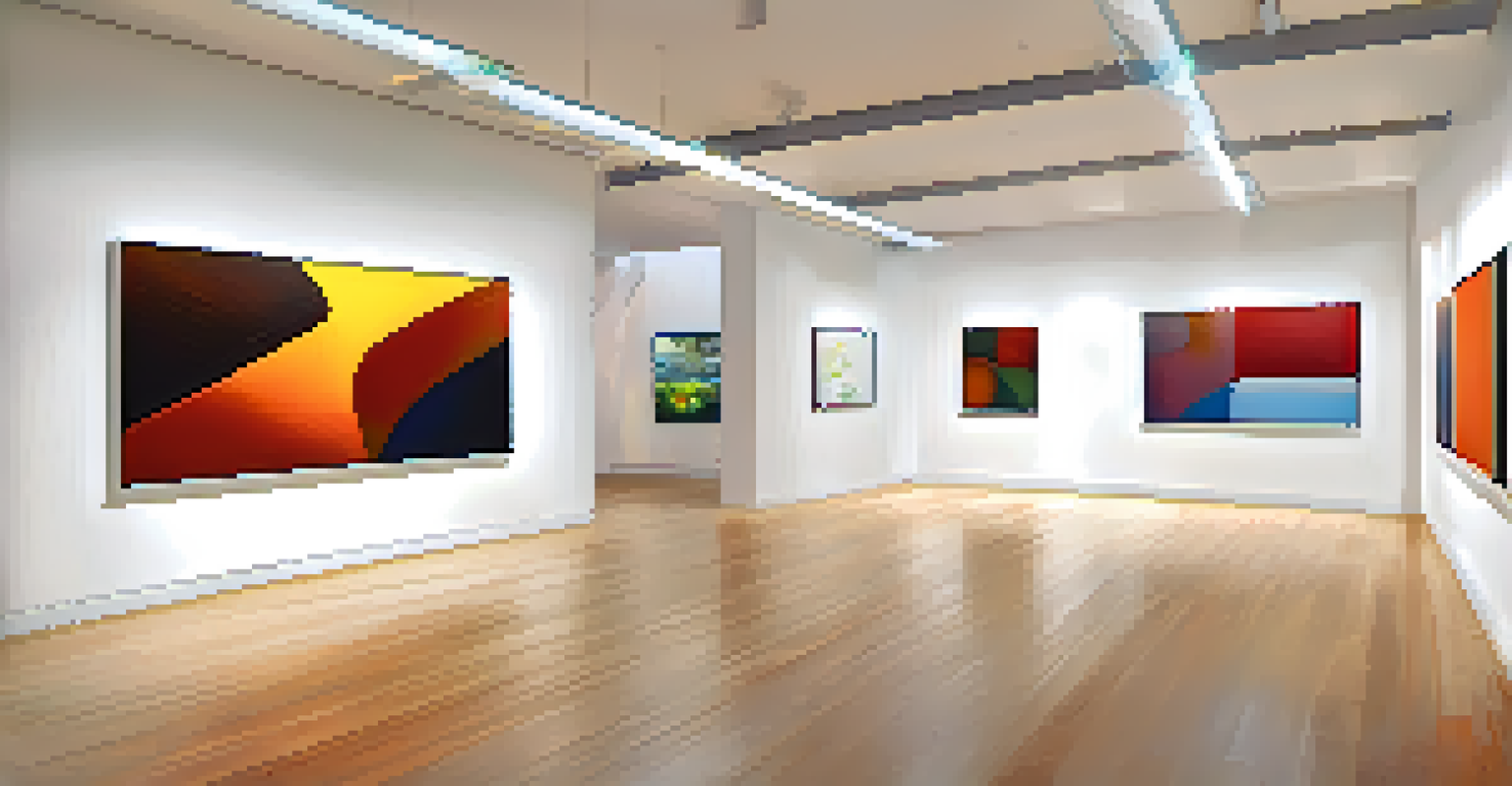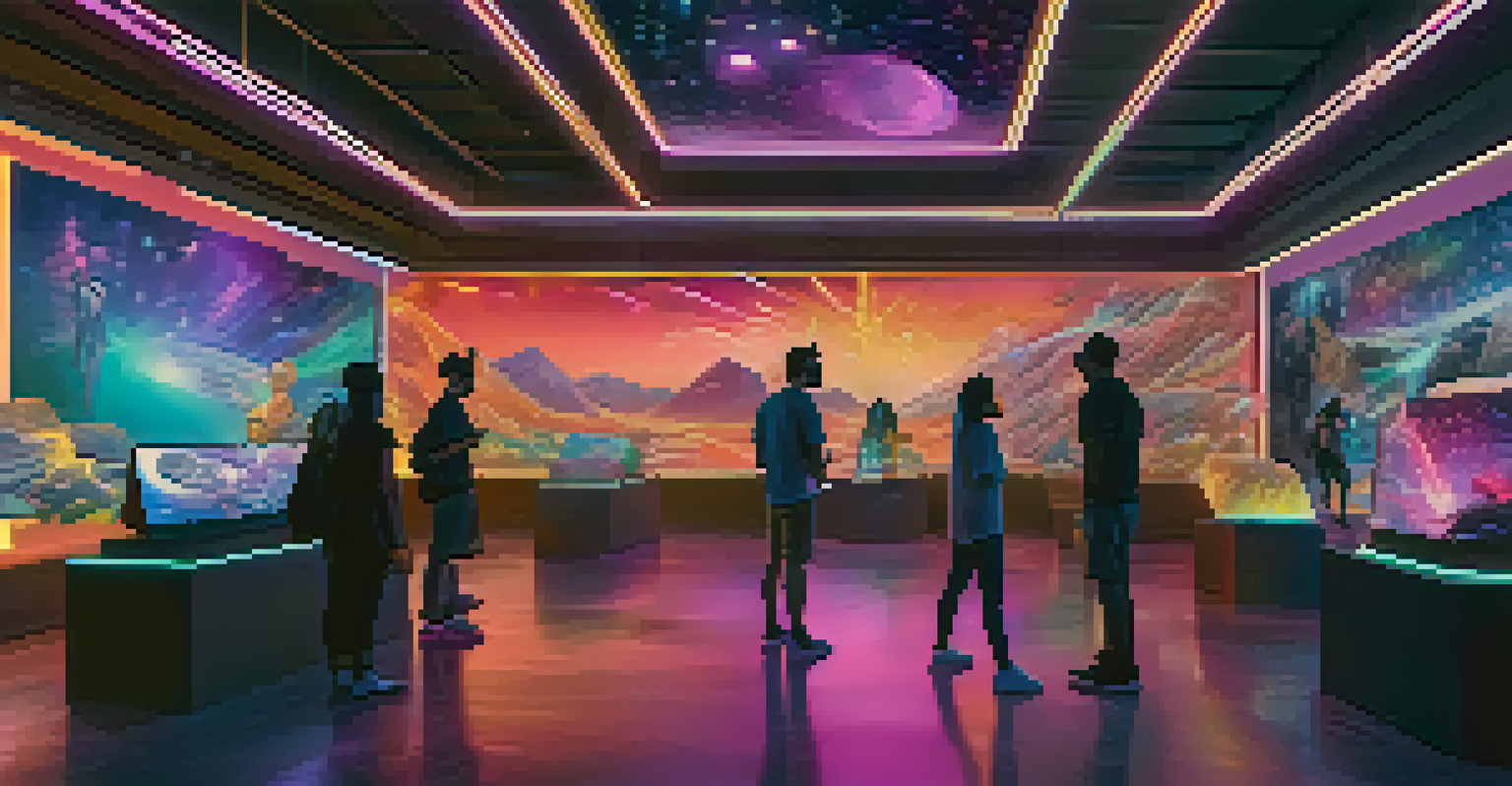Digital Art and NFTs: Authenticity in the Creative Space

Understanding Digital Art in the Modern Era
Digital art has transformed how we create and consume art today. It encompasses a wide range of artistic expressions, from digital paintings to 3D animations. This form of art is not limited by physical mediums, allowing artists to explore new dimensions and techniques.
Digital art is not a new genre, but it has expanded in ways that we could not have predicted, allowing artists to explore and express their creativity in unprecedented ways.
As technology evolves, digital art has gained significant traction, attracting both established artists and newcomers. The accessibility of digital tools has democratized art creation, enabling anyone with a passion for art to express themselves. However, this explosion in creativity raises questions about originality and ownership.
In this vibrant landscape, understanding digital art is essential for appreciating its nuances and complexities. The shift from traditional to digital mediums has opened up exciting possibilities, but it also necessitates new ways to authenticate and value these creations.
The Rise of NFTs in the Art World
NFTs, or non-fungible tokens, have taken the art world by storm, offering a new way to buy and sell digital art. Unlike cryptocurrencies like Bitcoin, which are interchangeable, NFTs are unique digital assets tied to specific artworks. This uniqueness is what makes NFTs so appealing to artists and collectors alike.

With NFTs, artists can sell their work directly to consumers, bypassing traditional galleries and auction houses. This direct connection fosters a sense of community and ownership, allowing collectors to support artists in a more meaningful way. Moreover, the ability to program royalties into NFTs ensures that artists continue to benefit from their work over time.
Digital Art's New Accessibility
Digital art has democratized creativity, allowing anyone with a passion to express themselves through various artistic forms.
As the popularity of NFTs surges, they are redefining the concept of ownership in the digital realm. This shift encourages artists to experiment and innovate, knowing that their creations can have real value in the marketplace.
Establishing Authenticity Through Blockchain Technology
One of the key features of NFTs is their reliance on blockchain technology, which ensures the authenticity and provenance of digital art. Each NFT is recorded on a blockchain, providing a transparent and tamper-proof ledger of ownership. This means that anyone can verify the origin and history of a digital artwork.
NFTs enable a new model for art consumption and ownership, allowing artists to benefit directly from their creations in a way that traditional systems often failed to provide.
This level of transparency is crucial in combating art forgery and plagiarism, which have long plagued the art world. With blockchain, artists can assert their rights, and buyers can invest with confidence, knowing they are acquiring a genuine piece. This technology acts as a digital certificate of authenticity.
By leveraging blockchain, the art community is taking significant steps toward safeguarding creativity and originality. As more artists and collectors embrace this technology, the landscape of digital art will continue to evolve, with authenticity firmly at its core.
Challenges of Authenticity in Digital Art
Despite the advantages of NFTs and blockchain, challenges remain in establishing authenticity in digital art. One major issue is that digital files can be easily copied and shared, leading to confusion about what is truly 'original.' Unlike physical art, where a single piece exists, digital art can proliferate online in an instant.
Additionally, the NFT market is still relatively new, and not all NFTs are created equal. Some artists may not fully understand how to leverage this technology, leading to potential pitfalls in their work's authenticity. Buyers must educate themselves to discern between genuine NFTs and those that may lack substantial value.
NFTs Redefining Art Ownership
NFTs provide a unique way to buy and sell digital art, creating a direct connection between artists and collectors.
Navigating these challenges requires a collective effort from artists, collectors, and platforms to establish best practices. By fostering a culture of transparency and education, the digital art community can enhance the credibility of NFTs and ensure that authenticity remains paramount.
The Role of Artists in the NFT Ecosystem
Artists play a crucial role in shaping the NFT ecosystem, as they are the creators behind the art that fuels this market. By embracing NFTs, artists can gain more control over their work and how it is distributed. This empowerment allows them to explore new creative avenues while directly engaging with their audience.
Moreover, artists can utilize NFTs to tell their stories, adding context and value to their creations. This narrative aspect can enhance the emotional connection between the artwork and the collector, making the purchase more meaningful. As artists innovate, they also influence the broader perception of digital art.
As the landscape of digital art continues to evolve, artists must adapt and find their unique voice within the NFT space. By doing so, they not only contribute to their success but also to the growth and authenticity of the entire digital art community.
Collecting Digital Art: A New Frontier
Collecting digital art has become an exciting new frontier for art enthusiasts, thanks to the advent of NFTs. This shift allows collectors to own unique pieces of art that they can display in virtual galleries or even in the metaverse. With the ability to showcase digital art in innovative ways, collectors are experiencing art in a whole new light.
However, venturing into the world of digital art collection requires a mindset shift. Unlike traditional art, the value of digital art can fluctuate significantly based on trends and market demand. Collectors need to be knowledgeable and discerning, understanding the factors that contribute to an artwork's value.
Blockchain Ensures Authenticity
Blockchain technology offers a transparent way to verify the authenticity and provenance of digital art, combating forgery.
Ultimately, collecting digital art can be a rewarding experience, offering both aesthetic pleasure and potential investment returns. As collectors navigate this new landscape, they contribute to the recognition and legitimacy of digital art as a respected and valuable creative medium.
Future Perspectives: The Evolution of Digital Art and NFTs
As we look to the future, the evolution of digital art and NFTs promises to bring even more innovation and creativity. With advancements in technology, we can expect new tools and platforms that enhance the creation and distribution of digital art. This will likely lead to a more diverse range of artistic expressions and styles.
Moreover, as more industries begin to recognize the value of digital ownership, we may see NFTs expanding beyond the art world. From music to fashion, the implications of NFTs could reshape how we perceive ownership in other creative sectors. This cross-pollination could lead to exciting collaborations and new forms of digital expression.

Ultimately, the journey of digital art and NFTs is just beginning. As artists, collectors, and technologists come together, we can foster an environment that values authenticity, creativity, and innovation in the digital age.